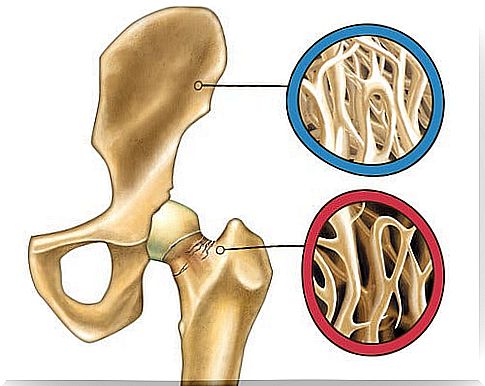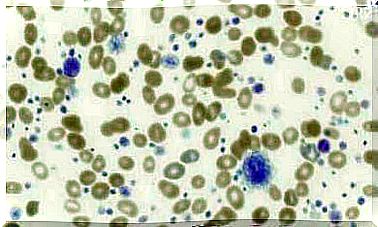Osteoporosis: 6 Facts To Know

Osteoporosis is a bone disease that can occur as a result of bone decalcification, vitamin D deficiency, or genetic factors.
It occurs when the bony parts are subject to wear in their internal microstructure, decreasing their density.
As a result, the risk of fractures increases and severe inflammatory reactions and intense pain are generated.
Although it is a common ailment in the elderly, some may suffer from it prematurely due to injuries or habits that deteriorate bones.
The most worrying aspect is that many still don’t know how serious it can be and, due to the absence of symptoms, they don’t know they suffer from it.
For this reason, it is essential to know all the data concerning the development of osteoporosis and, in case of risk factors, to consult your doctor.
Below we share 6 relevant facts that, for the sake of their health, everyone should know.
1. Osteoporosis: risk factors

The weakening of the bones is usually caused by a low absorption of calcium and vitamin D, especially when it comes to old age.
- The lack of these nutrients reduces bone density and, in the face of injury or disease, can cause fractures and irreversible damage.
- This situation can occur due to genetic factors, but it is also associated with hormonal changes that people suffer from in adulthood.
- Excessive consumption of tobacco and alcohol also affects its development.
- Decreased estrogen levels during and after menopause is another linked cause.
- You are more likely to suffer from it if you also have anorexia or bulimia.
2. Symptoms
Unfortunately, this disease is one of the body’s “silent enemies”, since it does not manifest itself with noticeable symptoms until it becomes a more serious problem.
- Detection often occurs when the person suffers a fracture before they know they have the disease.
- This injury can also occur without receiving significant bumps or trauma.
- Osteoporosis can be suspected when they lose up to 5 centimeters in height.
- Some go on to develop what is known as a “widow’s hump,” which is a hunched back.
3. Diagnosis

To diagnose the disease, a medical study known as BMD, which consists of measuring the mineral density of the bones , must be performed.
- This is a low-radiation X-ray that does not take long and is painless.
- A spine and hip exam can show a vertebral fracture or collapse.
- Common x-rays are usually not accurate enough to let you know if this condition exists.
4. Prevention
Although there are many factors that can lead to the development of osteoporosis, the continued practice of healthy habits is crucial in minimizing the risks.
- It is essential to ensure optimal absorption of calcium and vitamin D, by including foods that contain them in the diet.
- The National Osteoporosis Foundation (NOF, for its acronym in English) recommends 1000 mg of calcium per day for adults, and 1200 mg per day for women over 50 and men over 70.
- The consumption of sodium and saturated fats should be limited, as they hinder the absorption of calcium.
- It is important to increase your magnesium intake, as it helps keep bone density stable.
- Daily exercise practice is beneficial, as it strengthens the bones and improves coordination and balance.
5. Medicines to stop or prevent osteoporosis

Currently there are drugs whose properties fight the loss of bone density, avoiding serious consequences such as fractures.
- Among these we find bisphosphonates, whose goal is to avoid bone wear by deactivating some cells known as osteoclasts, whose purpose is to absorb bone tissue.
- Calcium and vitamin D supplements are recommended, especially when it is difficult to get them through food.
- The treatments with estrogen help prevent and fight disease in the case of menopausal women.
6. Side effects of the treatment
Although medications for the treatment of this disease can be effective, it is important to know that, in most cases, their consumption can cause some side effects.
Among these are:
- Joint and muscle pain,
- Esophageal damage,
- Stomach ache,
- Arrhythmias and heart palpitations.
On the other hand, it must be said that the drugs mentioned have an “expiry” after which they have no effect. After 3 years we need to analyze how useful they have been or what negative effects they have caused.
In some cases it is necessary to stop the treatment and spend several periods without drugs, because taking them for a long period of time is dangerous.
The best tool for dealing with this condition is prevention. For this reason, if risk factors arise, it is good to periodically perform a bone densitometry.









